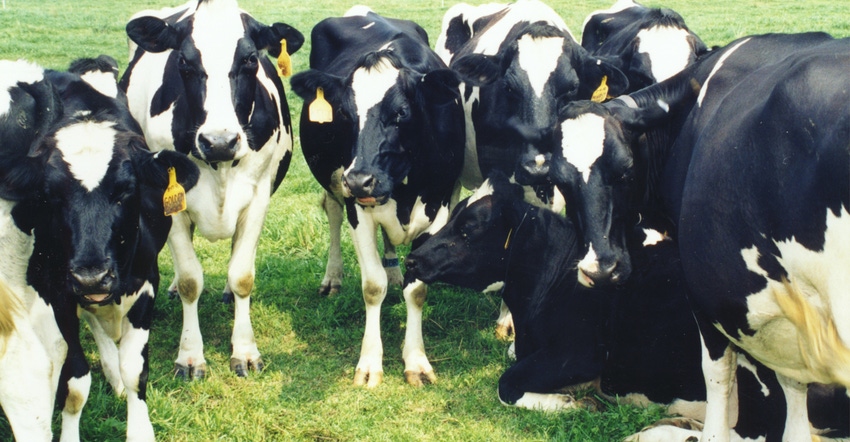
Milk production continues to run well above a year ago.
“December milk production was 3.1% higher than a year ago, marking the second straight month above 3%,” says Bob Cropp, University of Wisconsin-Madison dairy economist.
Milk cow numbers have been increasing since July, with another 12,000 in December bringing the total increase to 100,000, Cropp says. December cow numbers were 1.1% higher than a year ago. Of 24 selected states, just eight had fewer milk cows than a year ago. Milk per cow continues well above the normal trend, up 2%.
More milk pressures prices
“With the growth in milk production, improved domestic sales of milk and dairy products, and favorable dairy exports will be needed to maintain and to increase milk prices,” Cropp explains.
“So, with the current amount of milk being produced, we could see the Class III price in the $16s the first half of the year and the $17s the second half, if COVID-19 is more under control and things turn more to normal.”
Cropp says the Class IV price could be in the $14s and $15s during the first half of the year and the $16s during the second half. But none of this certain, and a lot could change this forecast.
Until COVID-19 is more under control, dairy product sales will be dampened. Hopefully with distribution of the vaccine, life will become more normal. With restaurants more fully opened and schools returning to in-person learning, sales could improve by the second half of the year.
Based on recent data, the forecast for 2021 dairy exports on a milk-fat basis has been raised to 9.7 billion pounds, 100 million pounds higher than in December. Most wholesale dairy product prices reported in the USDA National Dairy Products Sales Report rose the week ending Jan. 9. The exception was the price of 40-pound blocks of cheddar cheese, which fell 8.5 cents to $1.67 per pound. The price for 500-pound barrels of cheddar cheese rose 4.9 cents to $1.53 per pound. Per-pound prices for butter, nonfat dry milk and dry whey increased to $1.49 (up 5.1 cents), $1.12 (up 2.3 cents), and 44 cents (up 3.2 cents), respectively.
For the trading week ending Jan. 9, Chicago Mercantile Exchange spot prices for 40-pound blocks and 500-pound barrels of cheddar cheese were significantly higher than the most recent prices, averaging $1.78 and $1.60 per pound, respectively. CME spot prices for nonfat dry milk and dry whey were also higher, averaging $1.18 and 49 cents per pound, respectively. The CME weekly average spot price for butter was lower, averaging $1.41 per pound. Recent U.S. dairy product prices have been competitive with foreign export prices, according to USDA.
Congress passed the Consolidated Appropriations Act of 2021, and then-President Donald Trump signed it into law on Dec. 27. The CAA includes $900 billion for COVID-19 relief in the form of direct payments to households, jobless aid, support for small businesses and many other financial stimulus measures. The relief provisions include about $13 billion specifically designated for the agricultural sector.
For the dairy industry specifically, the CAA includes supplemental Dairy Margin Coverage payments based on the difference between each participant’s actual milk production in 2019 and the operation’s historical production base previously established through the program. The CAA establishes a dairy donation program to provide $400 million to pay for milk to be processed into dairy products and donated to nonprofit entities.
Risk management
According to USDA, recent enrollment in the Dairy Margin Coverage Program, Dairy Revenue Protection and Livestock Gross Margin for Dairy Cattle Program indicates that U.S. dairy farmers are managing their risk. Nearly three-quarters of all U.S. dairy producers with established milk production history are enrolled in DMC for 2021. In 2020, a total of 13,532 operations were enrolled in the program. This year, USDA reports that 18,500 dairy operations nationwide signed up for the program.
About 3,000 dairy producers purchased additional protection under Dairy Revenue Protection. That covers 30% of the milk supply and has provided more than $400 million in payments to operations enrolled in the program since 2019.
According to USDA, 200 dairy producers purchased coverage through Livestock Gross Margin for Dairy Cattle, which provides protection when feed costs rise or milk prices drop. Coverage can be tailored to any size operation.
Read more about:
Covid 19About the Author(s)
You May Also Like






